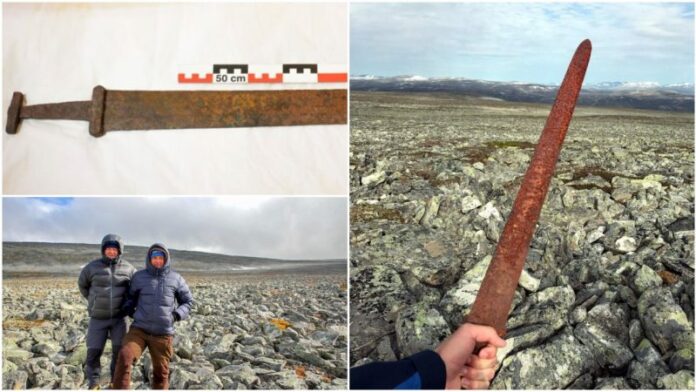In the late summer of 2017, a group of reindeer hunters in Norway made a discovery that captured the attention of archaeologists and history enthusiasts alike. Einar Åmbakk and his two friends were high in the mountains of Oppland County, Norway, when something remarkable caught Åmbakk’s eye. Lying hidden among the rocks was a Viking sword estimated to be around 1,200 years old, in surprisingly good condition. The discovery left the world asking, how did such a precious artifact find its way to such a remote location, and why were there no other traces of Viking presence?
The Discovery of the Viking Sword
While on a routine reindeer hunting trip, Åmbakk and his friends came across the Viking sword, resting between rocks in an area that, for centuries, had likely remained undisturbed. Though the hilt and blade were coated with rust, the sword was largely intact. This included the metal components, while the organic materials such as leather or wood, which likely once adorned the hilt, had long since disintegrated. Upon discovering the artifact, the hunters shared their find on social media, which quickly attracted the attention of archaeologists and historical researchers.
Fortunately, the cell phone used to take pictures of the sword also recorded the GPS coordinates, which enabled Åmbakk and his companions to lead experts from the Norwegian glacial archaeology group, Secrets of the Ice, back to the precise location of the find. This location, nearly two miles above sea level, was thoroughly examined, yet no other artifacts, bones, or evidence of human activity were uncovered.
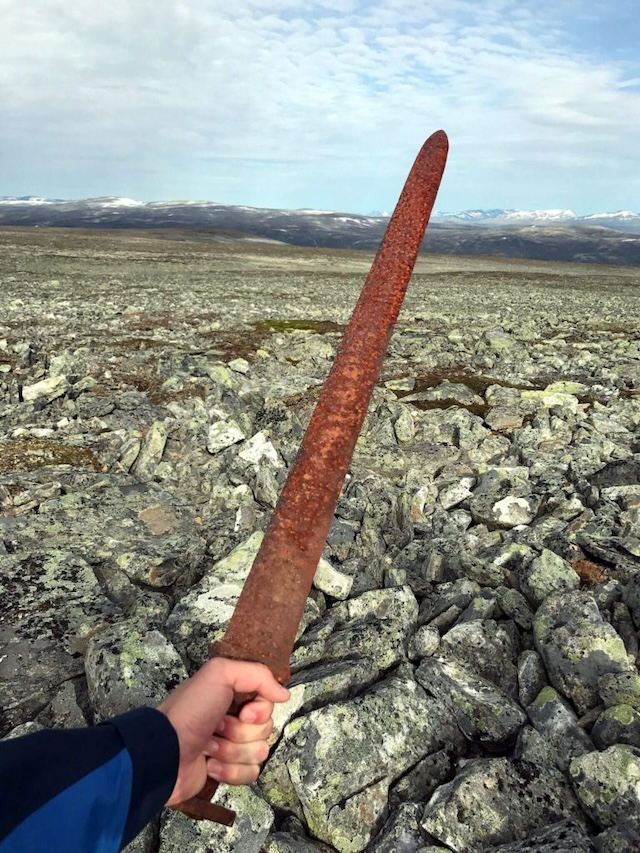
Why Was the Sword Alone?
One of the most perplexing aspects of the discovery was the absence of any other archaeological material. Viking swords are often found in burials or alongside other objects such as armor, shields, or even personal items. Yet, in this instance, the sword was alone. Despite an extensive search of the surrounding area, archaeologists uncovered no bones, no other weapons, and no traces of a burial site.
It remains a mystery as to how the sword came to rest in such an isolated location. Theories suggest that the cold, dry air and high altitude might have preserved the sword remarkably well, helping it to remain hidden for over a millennium. Some researchers propose that the Viking warrior carrying the sword may have gotten lost, separated from his group, or even succumbed to the harsh elements of the mountains, leaving his sword behind.
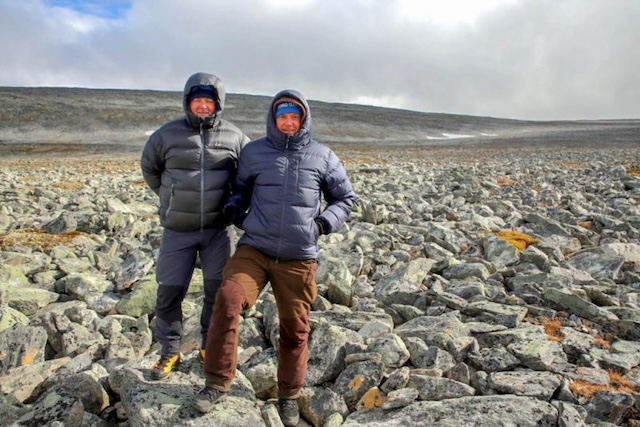
The Viking Sword: A Precious Artifact
Swords were among the most prized possessions of Viking warriors. These weapons were symbols of status, strength, and honor. Crafted with high-quality metal, many Viking swords featured intricate designs on the hilt, sometimes adorned with precious metals or stones, reflecting the wealth and social standing of their owner. Swords were often passed down through generations or even named, such as Meofainn (meaning “decorated down the middle”) or Gramr (meaning “fierce”). Vikings kept their swords close, even while they slept.
The sword discovered in Norway was no exception. Though its exact origin and owner remain unknown, its craftsmanship and preservation suggest that it belonged to a warrior of significant standing. The sword was dated to between 850 and 950 AD, a time when Viking raids and expeditions were at their peak across Europe. Given the sword’s location in the mountains, it is possible that the warrior was traveling through the area, perhaps on a hunting expedition, or had been separated from his group during a blizzard or other natural event.
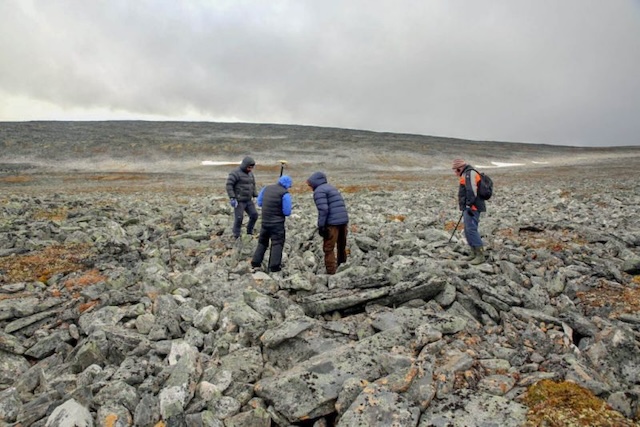
Mysteries Surrounding the Find
One of the most puzzling questions surrounding the discovery is how the sword remained so well-preserved despite lying exposed for more than a thousand years. Typically, artifacts exposed to the elements would suffer from rust, erosion, and other forms of decay. However, the sword found in Oppland County appeared relatively intact, with minimal damage from scratches or bending. Experts from Secrets of the Ice believe that the sword may have slipped between rocks shortly after it was left behind, providing a natural form of protection from the elements.
Additionally, researchers theorize that the constant cold and dry conditions of the high-altitude environment, combined with limited oxygen levels and heavy snowfall, played a significant role in preserving the sword. Despite these factors, the mystery remains as to how the sword ended up in such an isolated location with no other accompanying artifacts.

The Sword’s Historical Context
Viking-era discoveries in Europe, particularly in Nordic countries and Great Britain, are not uncommon. Archaeologists frequently uncover Viking hoards containing coins, jewelry, household items, and small weapons like daggers. However, finding a complete Viking sword is relatively rare, making this discovery all the more significant.
Vikings were known for their exploratory spirit, traveling vast distances for trade, conquest, and settlement. During the time period of the sword’s creation, Viking warriors would have been engaged in raids across Europe, including regions as far-reaching as the British Isles, the Mediterranean, and even North America. Norway, with its rugged mountains and fjords, was both a homeland and a launching point for these voyages. It’s possible that the warrior to whom this sword belonged was on such a journey, traveling through the mountains when tragedy struck.
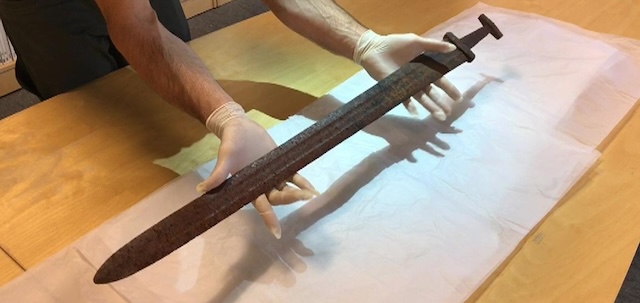
Legal and Cultural Implications of the Find
In Norway, artifacts dating before 1537 AD are automatically considered state property under the Cultural Heritage Act. This law ensures that valuable archaeological finds are reported to authorities and preserved for historical study. However, the law also places financial responsibilities on landowners, who must cover the costs of any excavation or recovery work conducted on their property. In some cases, this has led to valuable discoveries being kept secret, as landowners fear the financial burden and disruption caused by archaeological teams.
In the case of the Viking sword, Åmbakk and his friends reported their find, allowing experts to properly study and preserve the artifact. The sword has since been taken to a museum for further analysis and conservation, where it will continue to offer insight into the Viking world and its warrior culture.
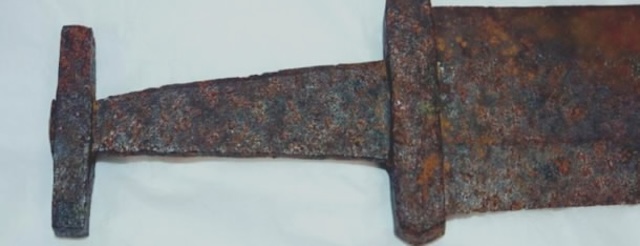
Conclusion
The discovery of a 1,200-year-old Viking sword high in the mountains of Norway is a rare and exciting find. While the sword itself provides a glimpse into the life of a Viking warrior, the absence of other artifacts or evidence raises many unanswered questions. How did the sword end up in such an isolated location? Was the warrior lost, injured, or caught in a blizzard? Though we may never know the full story, the discovery serves as a reminder of the rich history and mystery that still lies hidden in the mountains of Norway. As archaeologists continue to study the sword and its surroundings, they hope to uncover more clues about the life and fate of the Viking who left this remarkable artifact behind.
